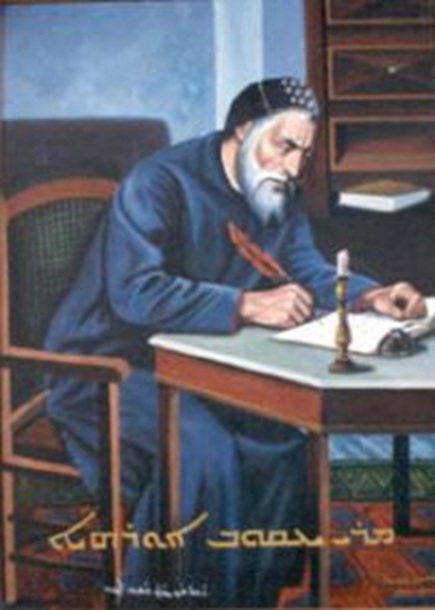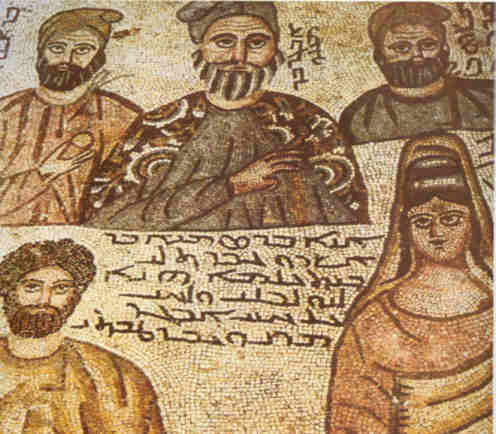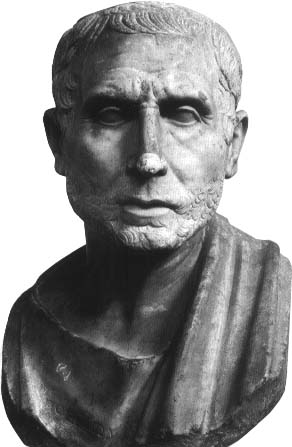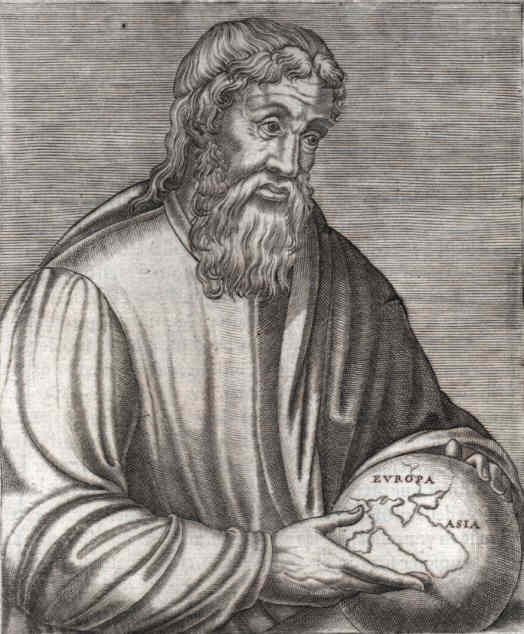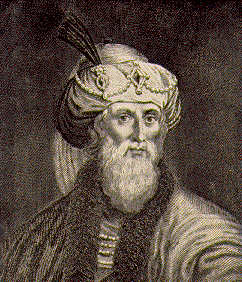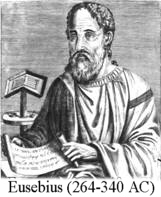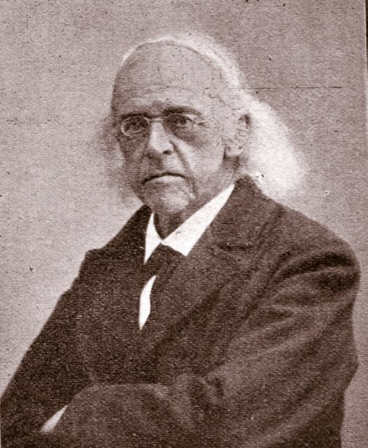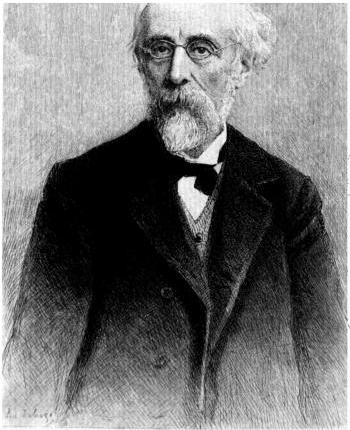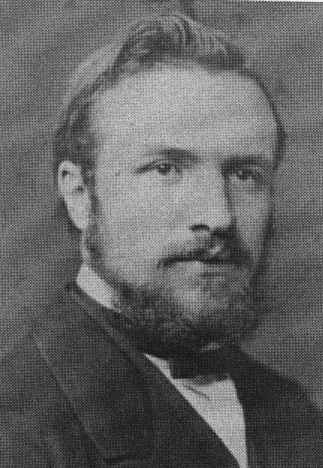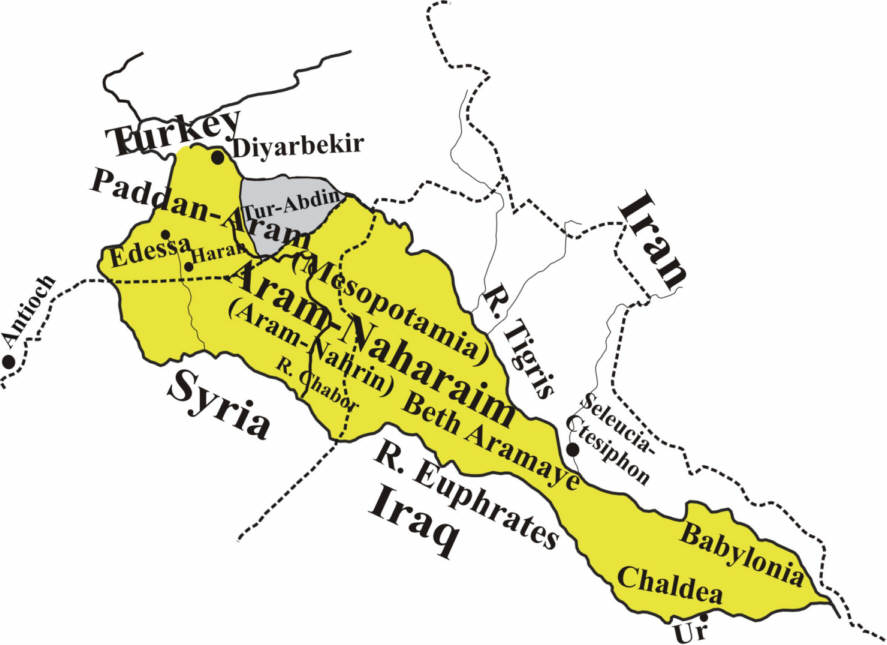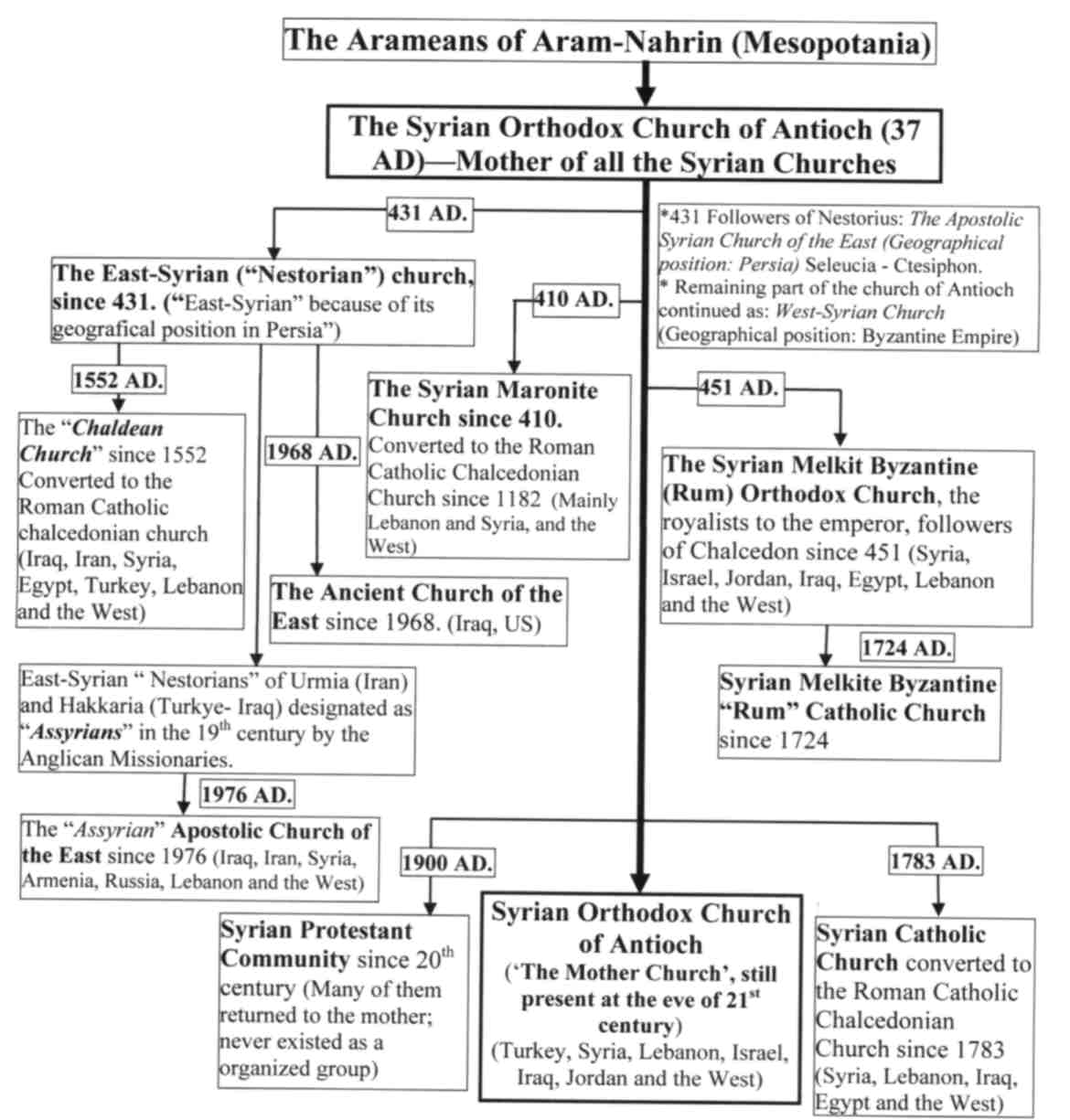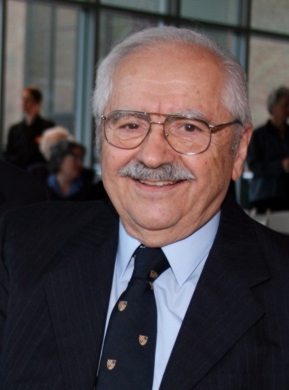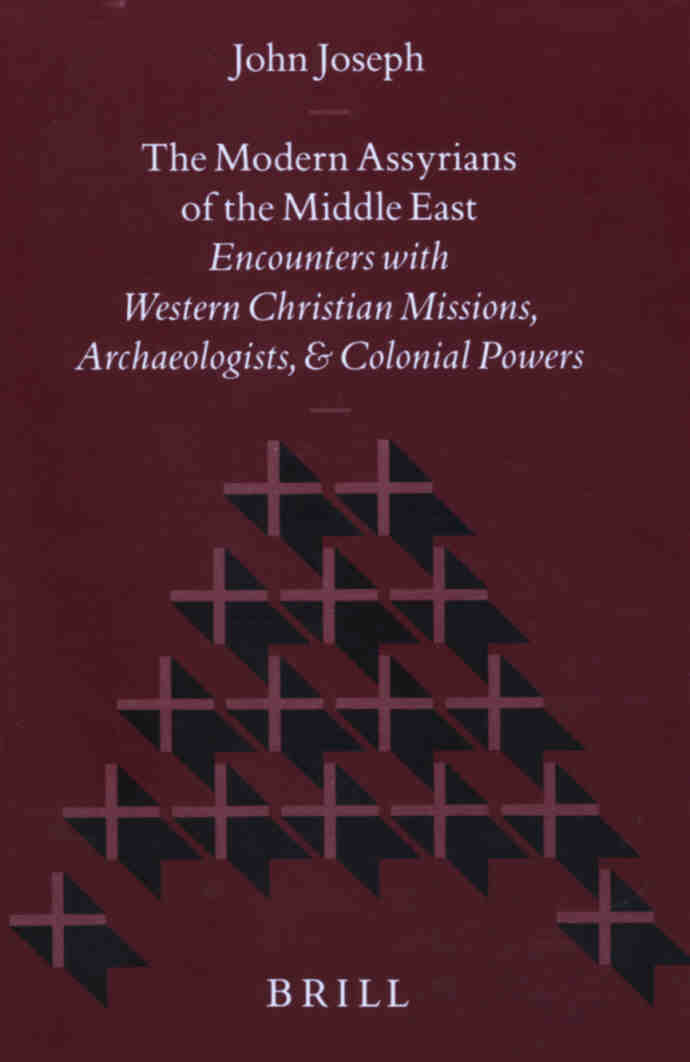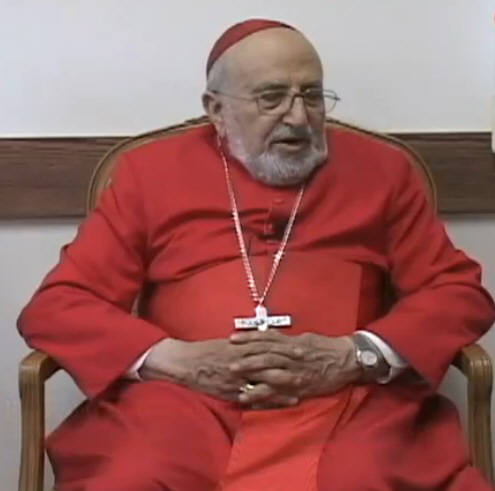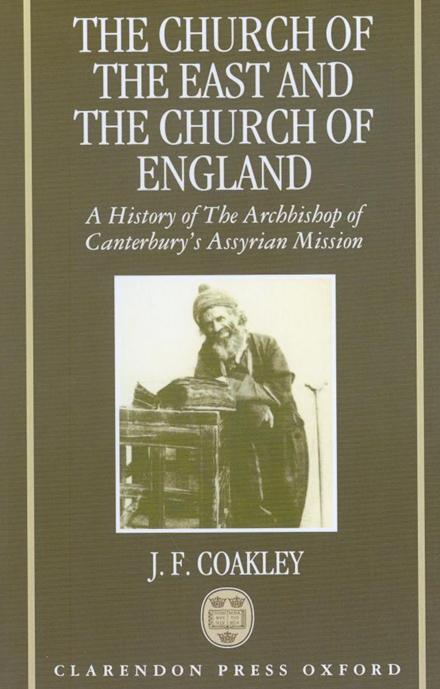|
Jacob of Urhoy (Urfa, in Turkey)
Who made the East- Aramean Nestorians known as "Assyrians"?
SUA/WCA and allowing terrorism
Aramean history, history, culture and language, a six partite interview
26-6-2007: Aram Nahrin: the Aramaeans, the Bible, Christianity, and the West
27-6-2007: Aramaic: the Millennia Long Trajectory of the Global Language
28-6-2007: Gabriel Sengo opens the Gates of Aramaean Thought, Culture and Wisdom
2-7-2007: Do not Call the Illustrious Nation of Aramaeans by the Misnomer 'Assyrians'!
2-7-2007: Extermination of the Aramaean Nation: Results of an Anglo – French Plan
(Photo: wikipedia.org) The Historian Poseidonio from Apamea (ca. 135 BC - 51 BC), was a Greek Stoic philosopher, politician, astronomer, geographer, historian, and teacher. He says: " "The people we Greek call Syrians, they call themselves Arameans" From: See J.G. Kidd, Posidonius (Cambridge Classical Texts and Commentaries, 1988), vol. 2, pt. 2, pp. 955-956)
(Photo: wikipedia.org) Strabo (born 63 BC or 64 BC, died ca. 24 AD), a Greek historian, geographer and philosopher is mostly famous for his Geographika ("Geography") He says: "Poseidonius conjectures that the names of these nations also are akin; for, says he, the people whom we call Syrians are by the Syrians themselves called Arameans." (From: The Geography of Strabo, translated by Horace Leonard Jones and published in Vol. I of the Loeb Classical Library edition, 1917, Book I, Chapt. 2, 34)
(Photo: http://www.ccel.org) Flavius Josephus (c. 37 – c. 100 AD (or CE)) was a 1st century Jewish historian and apologist of priestly and royal ancestry who survived and recorded the Destruction of Jerusalem in 70 and later settled in Rome. He says: ""Aram had the Arameans, which the Greeks called Syrians."" (From: Antiquities of the Jews, translated by William Whiston in 1737, Book I, Chapt. 6)
Eusebius of Caesarea (c. 275 – May 30, 339), was a bishop of Caesarea in Palestine and is often referred to as the father of church history because of his work in recording the history of the early Christian church. He says: ""and from Aram the Arameans, which are also called Syrians" (From: Sebastian Brock, "Eusebius and Syriac Christianity," in Harold W. Attridge and Gohei Hata, eds., Eusebius, Christianity, and Judaism (Leiden 1992), p. 226)
Abu Al-husayn 'ali Ibn Al-husayn Al-mas'udi, born 895 in Baghdad [Iraq] and died 957 in al- Fustat [Egypt], was a historian and traveler, known as "the Herodotus of the Arabs.” He was the first Arab to combine history and scientific geography in a large-scale work. On Tur Abdin he says: "Tur Abdin is the mountain where remnants of the Aramean Syrians still survive." (From: Michael Jan de Goeje: Bibliotheca Geographorum Arabicorum III, Leiden 1906, 54, I)
Prof. Dietrich Hermann Hegewisch born Dec. 15, 1746 in Quakenbrück [Germany] and died April 4, 1812 in Kiel, was a prolific german historian at the University of Kiel with a wide span of interests. He says: "Do not the Syrians, as they are usually called, or the Arameans, as they in fact are termed, deserve more attention in world history than they are usually given?" (From: D.H. Hegewisch: Die Aramäer oder Syrer; ein kleiner Beitrag zur allgemeinen Weltgeschichte, Berlinische Monatschrift, 2, 1794, p. 193)
On Page 197 he says: "The names Syria, Assyria, Mesopotamia, Babylon, etc. stem from the Greeks, who were not familiar with the true geography of these lands when the names first started to be used. Later, partly because of continuing ignorance and partly because of convenience despite having accurate knowledge, they persisted in using them since it would have required something of an effort to give up the old, familiar names and divisions of the countries and switch to the new ones, even if they were more accurate. The old, true, and single name of these lands is Aram; it is mentioned numerous times in the Bible of the Old Testament, and Greek scholars were also familiar with it and probably described the population of these areas as Arameans, though seldom, as they usually continued to use the term Syrian, which had been familiar to the Greeks."
On page 307 he says: "The Syrians or Arameans were not merely a numerous and large people, they were also a much cultivated people."
(Photo: http://portrait.kaar.at) Prof. Theodor Mommsen born Nov. 30, 1817, Garding, Schleswig [now in Germany] died Nov. 1, 1903, Charlottenburg, near Berlin, was a German historian and writer, famous for his masterpiece about the History of Rome. He received the Nobel Prize in Literature in 1902. He says: "the history of the Aramaean or Syrian nation which occupied the east coast and extended into the interior of Asia as far as the Euphrates and Tigris" (From: The History of Rome, written between 1854 and 1856, Leipzig, by Theodor Mommsen, Book First, Chapter One) "the Arameans defended their nationality with the weapons of intellect as well as with their blood against all the allurements of Greek civilization and all the coercive measures of eastern and western despots, and that with an obstinacy which no Indo- Germanic people has ever equalled, and which to us who are Occidentals seems to be sometimes more, sometimes less, than human." (ibid, Book Third, Chapter One)
(Photo: wikipedia.org) Prof. Theodor Nöldeke born March 2, 1836 in Harburg near Hamburg, died December 25, 1930 in Karlsruhe, was the leading german semitic scholar, who studied at Göttingen, Vienna, Leiden and Berlin. He says: "The main body of the population of all these wide landscapes from the Mediterranean Sea to beyond the Tigris belonged to a certain nationality, that of the Arameans." (From: Th. Nöldeke: Assyrios Syrios Syros, in Zeitschrift für klassische Philologie, Hermes 5, Berlin 1871, p. 460)
On page 461 he says: "It is well understandable that people have started to transfer the name of the country to the most important nationality and so the name 'syrian' was apprehended ethnological and was equated with 'aramaic'."
On page 468 he says: "Since the times of Alexander [the Great], if not already somewhat earlier, people have started to transfer the name of the Syrians exclusively over the prevailing in Syria nationality, and in this way this originally political-geographical term became an ethnological one that was identified with the local Arameans."
"From the time the Greeks came to have a more intimate acquaintance with Asia, they designated by the name of Syrians, the people who called themselves ´Arameans’.” (From: Th. Nöldeke, Kurzgefasste Syrische Grammatik (Leipzig, 1880), p. XXIX)
"Regarding the name of this nation and its language is the original 'Aramean’ in essence also the only one [sic], that for the employment of the present-day scholarship as yet strongly fits.” (From: Th. Nöldeke, "Die Namen der aramäischen Nation und Sprache,” in Zeitschrift der Deutschen Morgenländischen Gesellschaft 25 (1871), p. 131)
(Photo: www.doaks.org) Karl Eduard Sachau born 20 July 1845 and died 1930 was a German orientalist. He was 1872 professor at the University of Vienna, and in 1876, professor at the University of Berlin, where he was appointed director of the new Seminar of Oriental languages in 1887. He is especially noteworthy for his work on Syriac and other Aramaic dialects. He says: "The nation of the Arameans: This national name later, mainly in consequence of Jewish-Christian literature influences, gave way to the Greek designation Syrians." (From: Verzeichnis der Syrischen Handschriften der königlichen Bibliothek zu Berlin von Eduard Sachau 1. Abteilung, Berlin 1899, Vorrede I)
|
Aramean people: Aramean people (not to be confused with ‘Armenians’) speak Aramaic, the language spoken by Abraham, Moses and Jesus. They are the indigenous people of what was called in ancient times Aram- Nahrin, in our days it is called ‘Mesopotamia’. Some Arameans today identify themselves with “Assyrians”, because of the spiritual colonial hate generating activities of the Western missionaries and diplomats in the Middle-East in 16th and 19th centuries. Other Arameans became known as “Chaldeans”. However all of them are Arameans.In Turkey, the Arameans are called: Süryani. In Arabic they are called Al- Suryan. Aram Nahrin: the Aramaeans, the Bible, Christianity, and the West26-6-2007- Part 1 To illuminate the extraordinary contribution of the Aramean Nation to the formation and development of Christianity, Islam and other religious systems, and to underscore the terrible plight that afflicted the religiously and politically multi-divided nation, we decided to have an interview with an outstanding Armaean thinker and activist, Mr. Gabriel Sengo, Chairman of the Aram Nahrin Organization.
By Prof. Dr. Muhammad Shamsaddin Megalommatis, Orientalist Source: http://www.buzzle.com/articles/aram-nahrin-aramaeans-bible-christianity-west.html http://www.americanchronicle.com/articles/viewArticle.asp?articleID=30683 We are confident that through the several consecutive parts of the necessarily lengthy and very informative interview, the average Western reader will have an unparalleled opportunity to see the dark side of the Middle Eastern moon that has long been kept under secretive silence. A series of further articles on the Aramaeans, whom no one should call ‘Asyrians’ or ‘Chaldaeans’ anymore, will contextualize this interview. An Interview with Mr. Gabriel Sengo, Chairman of the Aram Nahrin Organization - Would you describe the deeds and the targets of Aram Nahrin organization? - Aram Nahrin is an international Human Rights and Cultural organization for defending worldwide the interests of the Indigenous Aramean Nation. This includes, amongst other responsibilities, promotion of their genuine cultural heritage, fighting for recognition of their fundamental human rights in particular in the Middle-East, combating the Western Colonial spiritual practices, fighting for the recognition both of the spiritual as well as physical genocide, and providing the world with unbiased and genuine information regarding the Aramean nation. To achieve this, we amongst others participate in the United Nations meetings of interest, report to the international institutions/ organizations on a number of topics concerning the rights of our nation, write to governments to help educate them, etc., etc.. - Whom does Aram Nahrin represent? - Aram Nahrin represents the Aramean (also known as "Assyrians" or Chaldeans) Indigenous nation of the Middle-East who have been present since thousands of years in this area. However since the beginning of 20th century many of them fled to the West, mainly because of persecutions and discrimination. Arameans are not the same as ‘Armenians’ and they are distinct from Arabs. In the Middle East they can be found in Syria (1.5 million), Lebanon (2.0 million), Israel (50.000), Jordan (70.00), Iraq (500.000-600.000), Iran (10-20.000) and are known under religious names such as "Maronites", "Syrian orthodox", "Syrian Catholic", "Chaldeans", "Nestorians or Assyrians", "Melkite (Greek) orthodox"and "Melkite (Greek) Catholic". - Where do the Aram Nahrin members come from? They come from various countries of the Middle-East. To mention a few: Syria, Turkey, Iraq, Jordan etc.. - To what extent are the Aramaeans known in the West? - The Arameans (including "Assyrians" and Chaldeans) are quite unknown in the West by the public, although sometimes wrongfully as "Arab Christians". The majority of the public in the West is aware of the Aramaic language, the language spoken by Christ Jesus, Moses and Abraham. However, many of them are not familiar with the owners of this language, namely the Aramean nation, who have been present for thousands of years in the area of Aram-Nahrin which became known to many people as Mesopotamia. As for the little that is known of them in the West, they are not correctly represented, but rather with fake names invented by the Colonial Spiritual activities of the West to split and destroy our nation! 1. Aramaean History and the Bible - Would you give our readers a brief diagram of the Aramaean History?
The area where the Aramean people come from was known as "Mesopotamia" and since the 20th century has been divided into the modern countries Iraq, Syria, and Turkey. In ancient times the cradle of the Aramean forefathers was called Aramnahrin (or: Aram-Nahrin) in Aramaic. In Hebrew it was called Aram-Naharaim which we encounter in the Old Testament. When the Old Testament was translated into Greek, the term Aram-Naharaim was translated into Mesopotamia, which most of people become familiarized with through reading educational and historical texts. The northern area of Aram-Naharaim was called Paddan-Aram, meaning the land of Aram where Biblical figures like Abraham and Jacob lived and walked. In Genesis 24:4 Abraham says to his servants, "You must go back to the country where I was born and get a wife for my son Isaac from among my relatives." Abraham says, "….the country where I was born…." meaning the country of his Aramean fathers Paddan-Aram (part of Aram-Naharaim). (Please also compare Deuteronomy 26:5) Roughly speaking, this area is situated in present south-eastern Turkey. A section of Paddan-Aram is now called Tur Abdin in the Aramaic (Syriac) language, which means "the mountains of the servants of the Lord", due to the overwhelming presence of monasteries and churches. Because of overwhelming presence of Arameans in the southern part of Aram-Nahrin, in the era of early Christianity, it was called Beth-Aramaya, meaning (in Aramaic) "the house of the Arameans". 2. The Indigenous Aramean traditions and Proto-land Paddan-Aram / Tur- Abdin According to the Aramean indigenous traditions, the origin of the Arameans can be traced to the upper- Mesopotamia, the plain of Paddan-Aram- in particular ‘Tur Abdin’ – which is the proto-land of the Aramean nation. From this proto- or indigenous land, in the course of time, the Arameans started to expand all over the near east. They established many kingdoms. To mention a few of them: Aram-Damascus, Aram-Beth Eden (Amos 1:5), Aram-Bit Bahiani, Aram-Bit Zamani (Diyarbekir), Arpad, Samal and Hama. The awareness of the proto-land Tur-Abdin / Paddan-Aram as the land of Arameans is clearly attested to by the brilliant Indigenous scholars of the Syrian Church of Antioch. These scholars had access to genuine historical sources, which disappeared in the course of time, at their disposal and thus their testimonies are of higher values than theories invented by some (materialized and sometimes politicized) modern scientists! A few examples may clarify this: *John Beth Rufina (John Rufus, the bishop of Maiumuni, Palestina, end of the fifth century) says, "After the flood in the days of Noah, the Arameans inhabited Beth Nahrin." *Michael the Great (Turkey, Malatya, 1199) says, "The kingdoms which have been established in antiquity by our race, (that of) the Aramaeans, namely the descendants of Aram, who were called Syrians *Patriarch Afrem Barsauwm, also called ‘the star of the Middle-east’, says, ""Beth Nahrin Beth Abraham, the land of Noah, Shem and Aram" Regarding Tur-Abdin: *Patriarch Afrem Barsauwm (called ‘the star of the Middle-east’) says, "The first inhabitants of Tur Abdin were the Arameans. This was also repeated by the East- Aramean Chaldean metropolitan Aday Sher, born in 1867 in Shaqlawa (Northern Iraq), who later became the archbishop of Se’ert (Turkey). Regarding Beth-Aramaye: Yacob Avgin Manna (Jacques-Eugene Manna 1867-1928), Bishop of the East-Aramean Chaldean church wrote, "The people from Babylon and Assur, are Arameans. The countries of Babylon and Assur were always called Beth Aramaye, that means country of the Arameans." (More: https://www.aramnahrin.org/English/Testimonies-Aramean-scholars.htm) Not only the Aramean indigenous traditions, but also the Biblical traditions regarding Laban and Betuel the Arameans of Paddan-Aram (Genesis 24:1-66) and Abraham (2038 BC) the wandering Aramean (Deuteronomy 26:5) reveal something about proto-land Paddan-Aram / Tur Abdin. 3. Arameans and Christianity After the coming of Jesus Christ, the Arameans of Aram-Naharaim accepted the teachings of Christ and established together with the apostles of Jesus and the converted Jews, the Syrian Church of Antioch, the second Patriarchy after Jerusalem, where for the first time the followers of Jesus Christ were called Christians (Acts 11:26). This church was the mother of all the Churches and the first Church established outside Israel, whose Patriarch currently resides in Damascus, Syria. The Semitic Arameans (‘not to be confused with "Armenians") underwent a change of name after they had embraced Christianity and were then called "Syrians", in order to be distinguished from the Arameans who were not converted. However, this should not be confused with the present-day Syrian Arabs. In a deeper sense, the name "Syrian" belongs to the Aramean people and not to the Arab invaders. However, after the conquering of Mesopotamia by the Arabs, they adapted the name "Syrian", with the result that the real Syrians, that is to say the Arameans, became strangers in their own indigenous lands. The Arameans were spread throughout the Middle East. However, in the very beginning of Christianity, geographically they were divided into East-Arameans, those living in Persian Empire and West-Arameans, those living in the Roman (Byzantine) Empire. Roughly speaking, Euphrates was the border. The Church in the Roman Empire: Syrian orthodox church of Antioch, the mother Church, with Antioch as the Ecclesial Jurisdiction. The Church in Persia: The Church of the East or the Church of Persia, Seleucia Ctesiphon was the seat of the Catholicos. However the Arameans in Persia were still under the jurisdiction of Antioch. The Arameans, who did not convert to Christianity, remained heathens; however with the advent of Islam many of them converted to Islam, forgot their Aramean origin, and hence were called "Arabs". - What religions, denominations do modern Aramaeans believe/practice? Would you give details about numbers of believers, religious hierarchy, etc?
The Arameans consist of various denominations, for example: Orthodox, Catholics and smaller factions like Protestants, Baptists etc.. The Majority however consist of Orthodox and Catholics. The numbers mentioned here below and elsewhere are only estimated. In the Middle East, the governments are not generous with providing exact numbers regarding their Christian subjects! Hierarchy Orthodox: Patriarch – Bishop – Priest. The head of the Church is the patriarch, the bishops are the heads of the Archdiocese and the Priests (married in the case of Orthodox) are the heads of the local churches. The priests are responsible to the bishops and in turn the bishops are responsible to the Patriarch. The monks generally live separate from the outside world in the monasteries and lead an ascetic life! Catholic Hierarchy: Instead of patriarch, the Aramean Catholics are subjects of the pope of Rome, and this includes West-Aramean Syrian Catholics, West-Aramean Melkite Catholics, West-Aramean Maronites, and East-Aramean Chaldeans. The priests are not married. Apart from this, their hierarchy is more or less the same. 4. Denominations: The East-Arameans: The main church is the Syrian Church of the East or the East-Syrian Church which also became known as "The Nestorian Church", "The Church of Persia", "The Church of the East" and more recently (since 1976) as "The Apostolic Catholic Assyrian Church of the East". In Iraq there are around 20.000-25.000 "Assyrians", while worldwide they are estimated to be around 400.000, many of them living in the United States. However, they may also be found in Russia, Ukraine, Armenia, Georgia, Iran, Syria and Lebanon. The Church leaders in the East and the West: For the mainstream "Nestorians", their church leader is Patriarch Mar Dinkha IV, who resides in Chicago, the United States. In 1968, the East Syrian Church was split, and the separated part was called: The Ancient Church of the East, sometimes also refered to as "the Assyrian Orthodox Church". Patriarch of the Ancient Church of the East is Mar Addai II who resides in Baghdad. In addition there are also small sects originating from the East Syrian Church for example, Nestorian Baptists, Protestants, Assyrian Pentecostal Church etc.. etc.. Chaldeans: In the year 1553 the Roman Catholic missionaries brainwashed a part of the East-Aramean "Nestorian" clergy by means of bribery to call themselves "Chaldeans" and with that, the Chaldean Church (of Babylon) was born and the division within the East-Arameans was a fact! These Chaldeans can be found mainly in northern of Iraq. However there are also Chaldeans in Iran, Syria, Lebanon and the West, in particular the United States of America. In Iraq there are around 200.000- 300.000 Chaldeans and worldwide there are around 500.000-600.000. The Church leader is Patriarch Mar Emmanuel III Delly, resides in Iraq. Patriarch Delly is a subject of the Pope. The West-Arameans: Main Stream: The Syrian Orthodox Church of Antioch. The Patriarch is Mar Zakka Iwas I, who resides in Damascus. Adherents, around 1.000.000 worldwide, in Iraq around 80.000, 160.000 in Syra and 80.000 in Lebanon. Furthermore, they can be found in Turkey, Israel, Jordan and the West (including North America, Brazil and Argentina). Syrian Catholic Church: Existed since 17th century. Patriarch Ignatius Peter III Abdel Ahad, resides in Beirut, subject of the Pope of Rome. Around 100.000 adherents worldwide, in Iraq 40.000. Syrian Maronite Church: Since 1182 subject to Rome. Patriarch Mar Nasrallah Boutros Cardinal Sfeir, resides in Bkerke Lebanon. The Aramean Maronites are the largest of all the Aramean denominations. Worldwide the Aramean Maronites are estimated to be around 4-5 million, while other sources speak of 12 million people. In Lebanon there are around 1 million Maronites. In the West, they mainly live in the United States, Australia, New Zealand and Brazil. Melkite (Greek) Orthodox Church, Antiochian Orthodox Church: (The term "Greek" has no relation with ethnicity, it is rather ecclesiastical) They are followers of the ecumenical council of Chalcedon since 451. Their Patriarch is Mar Ignatius IV (Hazim), who resides in Damascus in Syria. Most of the Melkite Orthodox Arameans live in Syria and Lebanon. In Syria their number is estimated to be around 600.000, while worldwide they total at around 1.200.000- 1.400.000. Furthermore they can be found in Iran, Iraq, Kuwait, Turkey, the West (including north and south America, Australia and Europe) Melkite (Greek) Catholic Church: Since 1724, separated from Melkite (Greek) Orthodox Church. Patriarch Gregorios III Laham, resides in Damascus, Syria and is subject to the Pope of Rome. There are worldwide around 1.100.000 West- Aramean Melkite Catholics with around 700.000 in the Middle- East. The West- Aramean Melkite Catholics can be found in Egypt, Jordan, Palestine, Brazil, Canada, Australia, Mexico, Venezuela and Argentina. Very rough calculations: Total amount of Arameans worldwide: 400.000 + 600.000+ 1.000.000+ 100.000 +4.000.000 + 1.400.000 + 1.100.000 = 8.600.000 If we assume that there are 12 million Maronites, the total amount of Arameans would be: 16.600.000. 5. Non-Christian Aramaeans - Are there non-Christian Aramaeans? - Yes there are! Between Midyat (Tur Abdin, Turkey) and Mardin (Turkey) there are around 300.000 Arameans who are called "Mhalmoye", sometimes wrongfully referred to as "Kurds". These "Mhalmoye" are known as "Ahlamu Arameans" in the annals of the Assyrian kings. Tiglath- Pilsere I (1114-1076) says about these Ahlamu Arameans " I marched against the Akhlamu Aramaeans, enemies of the god Ashur… … I crossed the Euphrates twice in one year, in pursuit of the Akhlamu Arameans". The Mhalmoye were Christians, There are in Syria two villages called Jubb ‘Addin and Bakh’a (50 km from Damascus) where the inhabitants are Moslems. These Moslems speak Aramaic and are aware of their Aramean origin. They are so proud of their Aramean origin that they even translate songs from other languages into Aramaic and maintain their customs and traditions. However, other Arameans who converted to Islam and did not maintain their Aramaic language, adopted Arabic and hence are called in our days "Arabs". However, these "Arabs" are not Arabs in the sense of their ethnicity, but rather because they have adapted Arabic. Thus they are linguistically "Arabised", not ethnically! In other words: there are millions of Islamic Arameans who "lost" their ethnicity after their conversion to Islam and are called "Arabs". We don’t know whether these Arameans are aware of their Aramean origin (Compare this with Persia: After their conversion to the Islam, they kept their language and therefore were not "Arabised", but remained ethnically Persians) There are also the Mandeans of Ahwaz and Khorramshar in Western Iran (Khuzistan). We don’t know if these Mandeans are Arameans or if they consider themselves as Arameans. Some people say that they are Arameans, while others say that they are Palestinians (based on their ‘The Inner Harran’). The interview with Mr. Gabriel Sengo will be published in several successive parts. All the parts of the interview:
Copyright © Aram-Naharaim Organisation
|
Letters to governments and international institutions
Aramean Spiritual/ Physical Genocide
Fake News on the Aramean nation:
Professor Dr. John Joseph. 5-7-2008: Assyria and Syria: Synonyms?
In a letter to the author (John Joseph), dated June 11, 1997, Patricia Crone wrote that she and Cook “do not argue that the Nestorians of pre-Islamic Iraq saw themselves as Assyrians or that this is what they called themselves. They called themselves Suryane, which had no greater connotation of Assyrian in their usage than it did in anyone else…. We take it for granted that they got the modern Assyrian label from the West and proceeded to reinvent themselves… Of course the Nestorians were Arameans.” (Page 27, footnote 94)
Professor Dr. Muhammad Shamsaddin Megalommatis 28-6-2004: Progenitor of Wars and Tyrannies: the Falsehood of Pan-Arabism
10-8-2005: The Aramaeans' rise will transfigure the Middle Eastern Chessboard
18-12-2008: Syriacs, "Assyrians" and "Chaldaeans" are all Aramaeans
16-12-2008: Pseudo-Assyrians, Pseudo-Chaldaeans, and the Cultural – National Needs of the Aramaean Nation
Patriarch Emmanuel III Delly
13-5-2006: Is there an Assyrian cause in Iraqi Kurdistan?
2-8-2005: IRAQ's Modern History. The Arab Majority and The Minorities
“The Church of the East and the Church of England: A History of the Archbishop of Canterbury's Assyrian Mission “ is the title of the book written by J.F. Coakley and published in 1992.
On page 147 Coackly reports about a dispute between Arthur Maclean, head of the Archbishop of Canterbury's Assyrian Mission from 1886 to 1891, and Hormuzed Rassam, the brother of Christian Antun (Isa) Rassam; a Chaldean family from Mosul. We read: “As he (Maclean) insisted, the ‘Syrians’ called themselves that, never ‘Assyrians’; …… to apply the name ‘Assyrians’ to these Eastern Syrian Christians appears to me either an error, or else pedantry. There is really as far as I know no proof that they had any connection with the Old Assyrians. ....... ..... Why should we invent a name when we have such a very convenient one, used for centuries, at our hand? I can understand that one living close to the ruins of Nineve should have a fit enthusiasm of Old Assyria; but is it common sense to cast aside a name used by the people themselves, and to invent another for them of very doubtful applicability? “
|
